Question 3

Question 4
The law of diminishing marginal utility states that as you consume more and more of the same good during a given period, your enjoyment gained from each additional unit of the good decreases. This is why more unites of a good will be purchased if the price decreases and vice versa - the law of demand
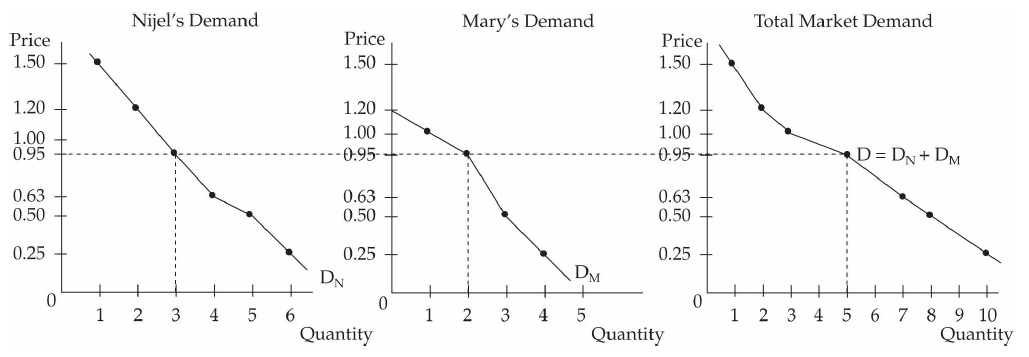
Question 6
If economic profits = 0, then
owners receive a payment equal to their opportunity costs
no incentive for firms to either enter or leave this industry
owners are earning the most that could be made elsewhere
Zero economic profits are also called normal profits
They are what all firms earn in the long run in a competitive industry
They do not indicate any resource allocation errors.
Question 8
- Because there are far more substitutes available for Sprite than there are for all types of soda pop, the demand for Sprite will be more elastic than the demand for all soda pop.
Question 12
In the absence of intervention, imperfect competition, externalities, public goods, and imperfect information all result in market failure.

Question 14
Firms with every type of market structure maximize profits by producing where MC=MR, if at all.
Producing more will increase costs more than revenues
Producing less will fail to take advantage of opportunities to sell additional unites when the additional revenue exceeds the additional cost
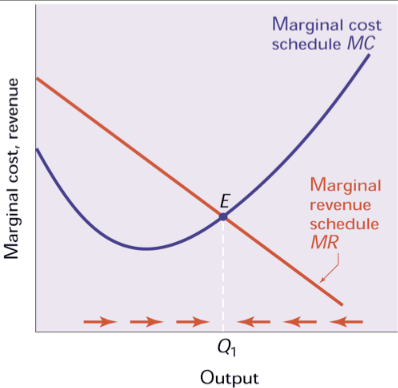
Question 16
The Sherman Act (1890)
- declared attempts to monopolize commerce or restrain trade among the states illegal
The Clayton Act (1914)
- strengthened the Sherman Act by specifying that monopolistic behavior such as price discrimination, tying contracts, and unlimited mergers are illegal
The Robinson-Patman Act (1936)
- prohibits price discrimination except when it is based on differences in cost, difference in marketability of product, or a good faith effort to meet competition
The Celler-Kefauver Act (1950)
- authorized the government to ban vertical mergers (mergers of firms at various steps in the production process from raw materials to finished products) and conglomerate mergers (combinations of firms from unrelated industries) in addition to horizontal mergers (mergers of direct competitors)
Question 20
By adding supply curves horizontally, the quantities each firm will provide at each price are combined into a total quantity supplied y the market at each price.
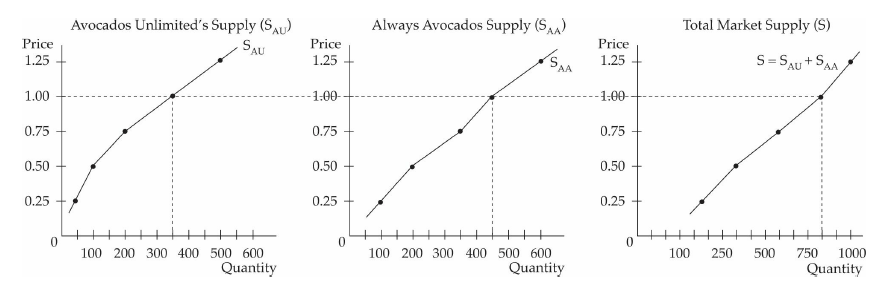
Question 21
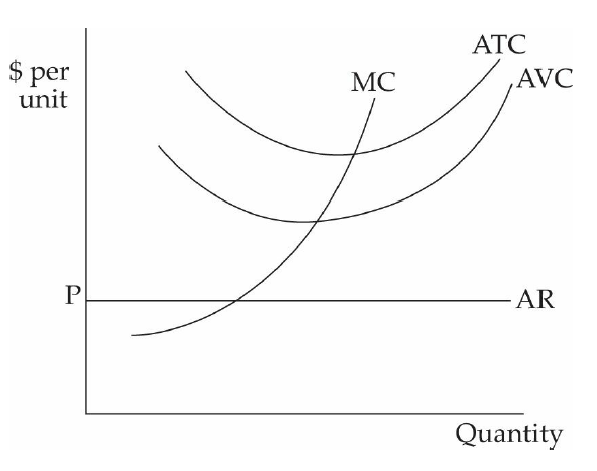
A competitive firm facing the demand and cost curve in the figure above should shut down immediately.
The firm is not covering its average variable costs. Not only is it losing money, it is not earning enough to help pay for any of its fixed costs
Question 27
tuba n. the lowest brass wind instrument
Because the demand for tuba makers is derived from the demand for tubas, when tuba demand goes down, tuba maker demand goes down and thus wages go down.
Question 32
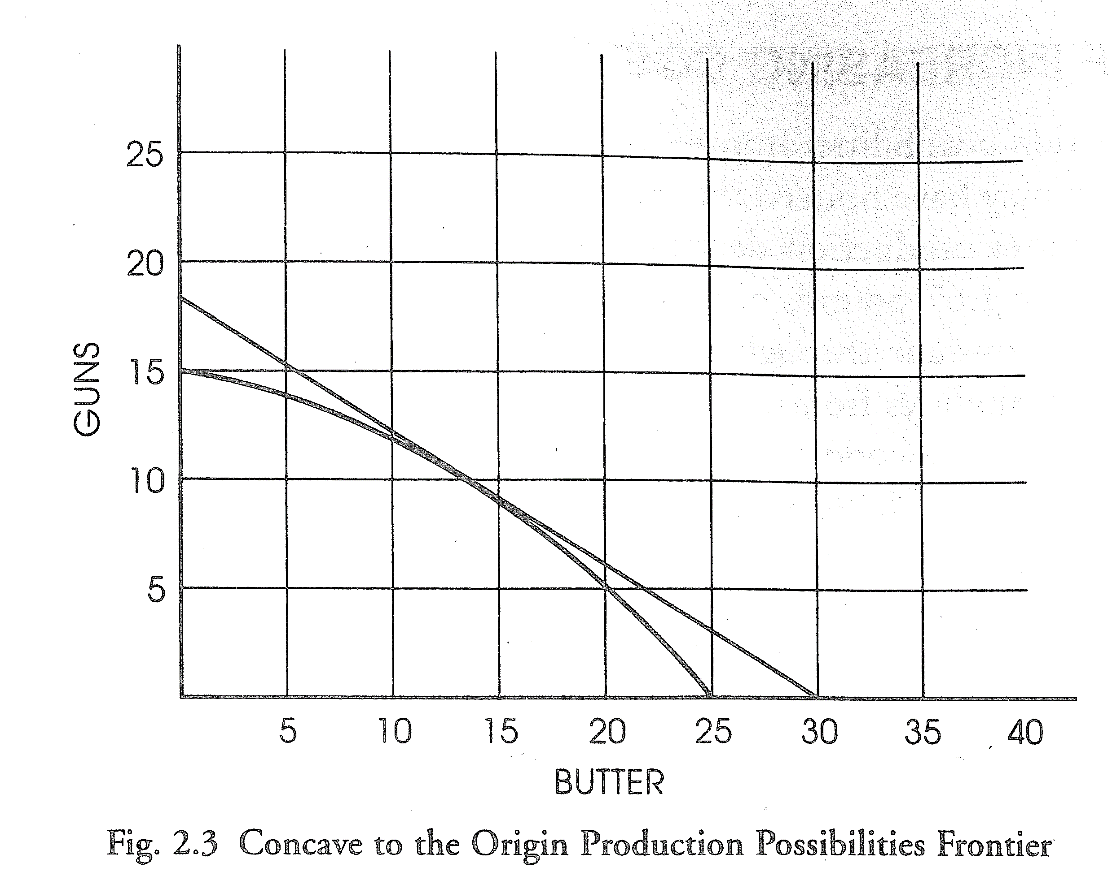
The curvature of PPFs results from increasing opportunity costs arising from the use of resources that are less and less specialized for the production of a particular good.
If the resources used to make the two goods are not specialized, opportunity costs are constant and the PPF is a straight line
Question 37

Question 38
Constant returns to scale
- output increases in proportion to the amounts of each of the inputs
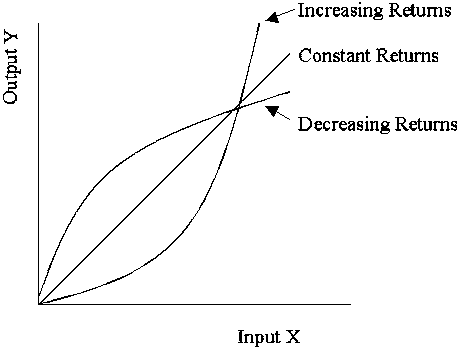
Question 39
Dominant Strategies Equilibrium vs. Nash Equilibrium
Dominant strategies are stable and self-enforcing
However, in many games one or more players do not have a dominant strategy
Nash equilibrium is a more general concept
A Nash equilibrium is a set of strategies such that each player is doing the best it can, given the actions of its opponents.
A dominant strategy equilibrium is a special case of a Nash equilibrium
Question 42
The demand for labor is determined by the marginal revenue product of labor, which is the product of the marginal product of labor and the marginal revenue from the output produced by the labor. Thus, if the mariginal product of labor decreases, so does the demand for labor.

Question 45
- Because a monopoly holds 100 percent of the market share, the concentration ratio is 100.
Question 50
- monopsony: (economics) a market in which goods or services are offered by several sellers but there is only one buyer
Question 51
A free rider problem arises when people try to benefit from a public good without paying for it.
The government can avoid this by taxing everyone and providing the public good itself.
Question 52
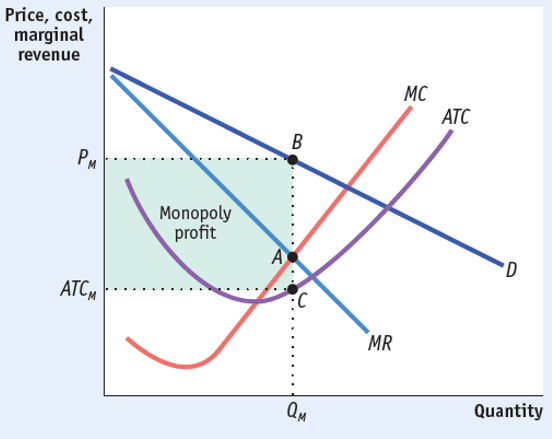
- Because monopolies lower the price in order to sell one more unit, the marginal revenue is not the price as indicated on the demand curve, but that price minus the lost earning on all of the previous units that are now selling at a lower price